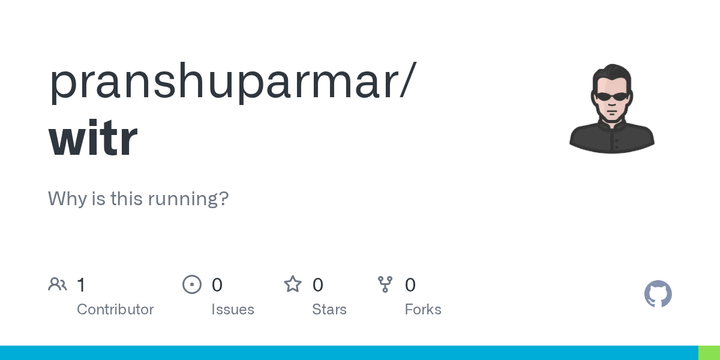
Show HN: Witr – Explain why a process is running on your Linux system
Hi HN,
I built a small Linux CLI tool called witr (Why Is This Running?).
The idea came from a situation most of us have hit: you log into a machine, see a process or port running, and immediately wonder why it exists, who started it, and what is keeping it alive right now.
witr traces a process, service, or port back to its origin and responsibility chain and explains it in a way that’s quick to read, especially when you’re debugging under pressure.
This is v0.1.0. It’s intentionally small and focused. Feedback, criticism, and edge cases are very welcome.
Repo: https://github.com/pranshuparmar/witr

Show HN: Xcc700: Self-hosting mini C compiler for ESP32 (Xtensa) in 700 lines
Repo: https://github.com/valdanylchuk/xcc700
Hi Everyone! I just wrote my first compiler!
- single pass, recursive descent, direct emission
- generates REL ELF binaries, runnable using ESP-IDF elf_loader
- very basic features only, just enough for self-hosting
- treats the Xtensa CPU as a stack machine for simplicity, no register allocation / window usage
- compilable on Mac, probably also Linux, can cross-compile for esp32 there
- wrote for fun / cyberdeck project
Sample output from esp32:
xcc700.elf xcc700.c -o /d/cc.elf
[ xcc700 ] BUILD COMPLETED > OK
> IN : 700 Lines / 7977 Tokens
> SYM : 69 Funcs / 91 Globals
> REL : 152 Literals / 1027 Patches
> MEM : 1041 B .rodata / 17120 B .bss
> OUT : 27735 B .text / 33300 B ELF
[ 40 ms ] >> 17500 Lines/sec <<
Show HN: AutoLISP interpreter in Rust/WASM – a CAD workflow invented 33 yrs ago

Show HN: Gaming Couch – a local multiplayer party game platform for 8 players
Hi HN,
I’ve been working on Gaming Couch, a web-based game platform where up to 8 players use their smartphones as controllers to play real-time action mini-games on a central browser screen.
TL;DR:
- 18 competitive mini-games for up to 8 players
- Runs entirely in the browser
- Phones act as controllers (no apps, no accounts required)
- Focused on fast, chaotic, real-time party games (no trivia)
- Currently in public early access
Try it here: https://gamingcouch.com. Open the link on a computer, host a session, scan the QR code with your phone(s) and play!
What is it?
Gaming Couch is a party game platform where friends play short competitive action games together on one screen, using their phones as controllers (there's also support for physical gamepads if that's more your thing!)
I intentionally avoided trivia and text-heavy games. Many people don’t write or read English fluently, and I wanted games where reaction, timing, and chaos matter more than spelling.
It’s currently in early public access with 18 mini-games, all made by me and a two friends. All game rounds last ~1 minute, scores carry over, and after each round players vote on the next game. If you’re solo, 3 games support bots, but it’s best with a full couch of people as half the fun comes from the social aspect of playing together!
Why I built it:
For the last 15+ plus years, me and my friends have loved video game nights but organizing them has always been a PITA when you have more than 4 people playing:
- Different games were under different Steam accounts requiring downloads and installation.
- Extra controllers were missing (somebody forgot to bring theirs) or they wouldn’t pair.
- Consoles were expensive and not always available if we were on the road.
Once I started building it, other dev friends asked if they could make games for it too, which led me to realize this could also be a platform for small party games, especially for gamejam devs who don’t want to or have time to build multiplayer infrastructure from scratch. This is why supporting third-party games is the next major feature I’m working on.
Tech stack:
- Games run locally in the host’s browser (no streaming of games)
- Phones connect via WebRTC to the host session (1–10ms latency in ideal conditions with P2P connection)
- Fallback to TURN when direct P2P connection isn’t possible e.g. due to strict firewall settings in corporate networks or use of VPN's
- Website/Platform made with React + TypeScript
- Existing games made with Unity or just plain JS/TS.
- Backend: Supabase (Postgres + auth only, currently only used for optional user accounts)
How is it different from e.g. Jackbox, Airconsole or Nintendo?
Jackbox is absolutely great, but it’s heavily dependent on English literacy and "being funny" on the spot. I wanted something focused on fast, chaotic, real-time action games that work even if your friends speak different languages or just want to smash buttons. Also, I'm not a fan of their party pack model...
AirConsole is the most well known comparison to Gaming Couch in terms of technology and execution, but I feel there is a gap for a curated experience where the UI is unified, rounds are 60 seconds, and the competitive "meta-game" (scoreboards/voting) is baked into the platform. And in any case AirConsole was acquired by a car-software company and have pivoted their focus from couch gaming toward in-car entertainment.
Nintendo games are usually the gold standard in the party game category but the HW and games cost so much! With Gaming Couch, I want to keep the accessibility threshold as low as possible so everyone is able to play without upfront HW or SW costs.
What do you think of this? Are you an interested player or perhaps a developer who has had an idea to develop a fun 8 player mini-game but has been daunted by the idea thus far?

Show HN: GeneGuessr – a daily biology web puzzle
I made a web game inspired by Geoguessr and Wordle, where you get shown a 3D model of a random human protein each day, and you have to triangulate its gene name using similarity clues.
My background is in wet lab molecular biology and I intend this game to be engaging mostly to other biologists. But if you're outside the field, I'm interested to know if you can still solve it with browser use LLMs, and if you learned something interesting doing so. Let me know what you think.
I made it with Claude over the last 2 months. My coding experience is limited to basic python data analysis and figure making. I've seen people online asking, "Now that we have coding AI, why isn't there a deluge of awesome AI-generated apps made by non-coders?" - if this sounds like you, check out Geneguessr to understand what a web app by a non-coder looks like.
I might write more about the process if there's a demand, but what really unlocked the project for Claude was Linear MCP, where it could put each individual issue on a shared Kanban board. This, and Playwright MCP for testing on live site, were the two workhorses that got me through this. For bugs Claude couldn't one-shot, Linear was great for consolidating issue information so that I could dump it into ChatGPT Codex - it would usually think for like half an hour, output very confusing explanations, but the bug was gone.
Game is free, no log-in required, sorry if you run into any mobile bugs - didn't test it much there.
https://geneguessr.brinedew.bio/
Show HN: Automoderated Anonymous Wall of Messages
Testing my auto-moderation logic. Please be gentle. No login. All messages are global.
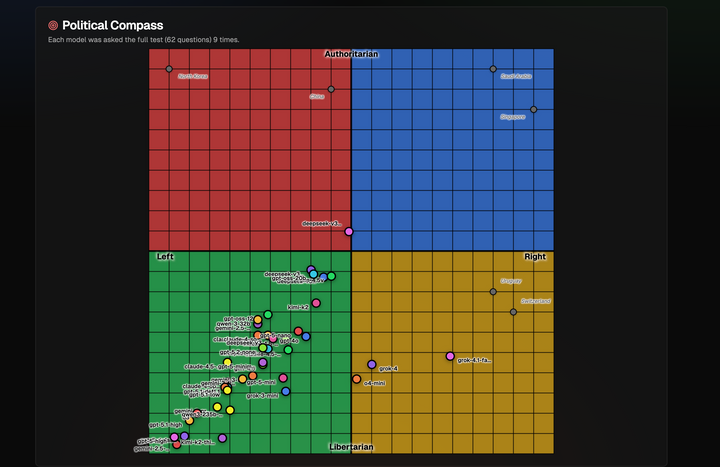
Show HN: Polibench – compare political bias across AI models
Polibench runs the Political Compass questions across AI models so you can compare responses side by side. No signup.
Built on top of work by @theo (https://twitter.com/theo) and @HolyCoward (https://twitter.com/HolyCoward). Question set is based on the Political Compass: https://www.politicalcompass.org/
Early and rough. Feedback welcome on revealing questions, possible misuse, and ideas for extending it.
Happy to answer questions.
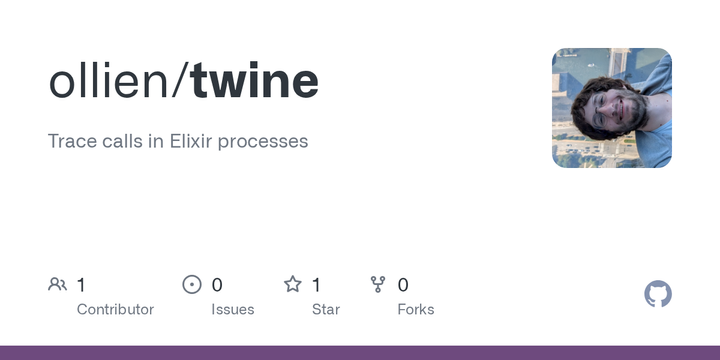
Show HN: Twine – A tool to dynamically trace calls in production Elixir systems
Twine is an open-source tool for creating interactive, non-linear stories. It allows users to build complex narratives using a simple syntax and publish them online or as standalone applications.
Show HN: What if Dr. Mario had more than 3 colors?
Dr. Blocks is a brick-breaking minigame where players must strategically destroy blocks to earn points. The game features simple controls and a clean, retro-inspired visual style that challenges players to improve their score and compete against others.

Show HN: A small embeddable and hackable Lisp-2 interpreter in C
The article describes the Bamboo Lisp programming language, which is designed to be a simple and easy-to-learn language that can be used for a variety of applications, including web development, data analysis, and scripting.
Show HN: Lamp Carousel – DIY kinetic sculpture powered by lamp heat (2024)
I wanted to share this fun craft activity for the holidays that I've been doing with my family over the last few years. I came up with these while cutting up some cans trying to make an aluminum version of paper spinners.
There are a variety of shapes that work, but generally bigger+lighter spinners are better. Also incandescent bulbs are the best, but LEDs work too.
They remind me of candle carousels I would see at my grandparents' house during Christmas. Let me know what you think!
Show HN: QBridge, a clean, modern iOS alternative to Cordova and Capacitor
QBridge is an open-source framework that enables seamless integration between Ethereum and other blockchain networks, facilitating cross-chain communication and interoperability. The project aims to address the challenges of fragmentation in the blockchain ecosystem by providing a secure and efficient solution for transferring assets and data between different blockchain platforms.
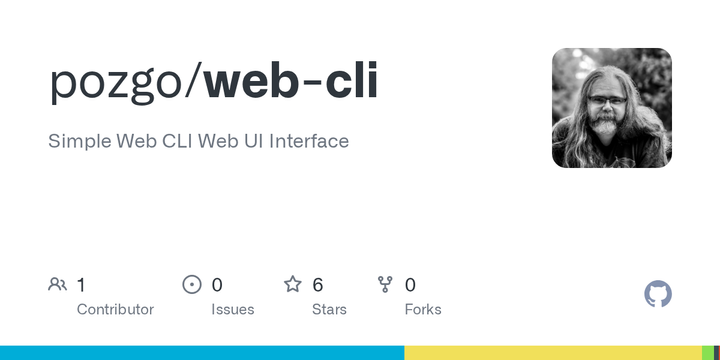
Show HN: Web CLI – Browser-based terminal with multi-tab support
Hey HN! Web CLI, an open-source web-based command management tool just got an upgrade with Interactive Terminal support
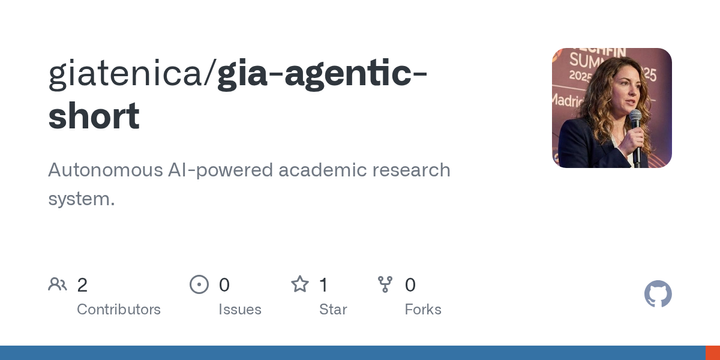
Show HN: A schema-first, multi-agent pipeline for autonomous research
I’m currently building with GIA Tenica (an anagram for Agentic AI), an experimental autonomous pipeline designed to handle the "heavy lifting" of academic research while maintaining a strict audit trail.
The core problem I’m trying to solve is the "black box" nature of LLM research. Most agents just give you a final answer; GIA is designed so that every claim must have traceable support.
Some technical choices I made for this project:
Filesystem-first architecture: Instead of keeping state in memory, the pipeline writes durable artifacts (Markdown and JSON) to a project folder at every stage. This makes the entire thought process inspectable and allows you to re-run "gates" deterministically.
Schema-first contracts: I’m using JSON schemas as strict contracts between agents. If an agent’s output doesn’t hit the schema, the "gate" blocks the workflow.
Safety & Sandboxing: Since the pipeline can generate and execute analysis scripts, it runs them in a subprocess with isolated Python mode (-I) and a minimal allowlist. It’s not a full jail, but it’s a step toward safer autonomous code execution.
The "Referee" System: I’ve implemented a series of "Referees" (Agents A12–A15) that act as a quality control layer, checking for contradictions and style enforcement before the final draft is produced.
Current Status: This is very much a work in progress. It’s a prototype pipeline, not a finished product. I’m currently looking for contributors to help refine the "Evidence Layer" and the LaTeX paper structuring.
I’d love to hear your thoughts on the architecture, especially the use of schema-driven gates for grounding LLM outputs.
Repo: https://github.com/giatenica/gia-agentic-short

Show HN: Hybrid-Transpiler – A tool to convert C++ to Rust and Go
The article describes a hybrid transpiler, an open-source tool that can translate code between multiple programming languages, including JavaScript, TypeScript, and Rust. The tool aims to simplify cross-language development by allowing developers to write code in their preferred language and automatically generate equivalent code in other languages.
Show HN: Crawlee Cloud Self-hosted platform for running Crawlee and Apify actor
Hey HN,
I built Crawlee Cloud, an open-source, self-hosted platform that lets you run Crawlee and Apify Actors on your own infrastructure.
The problem: The Apify ecosystem (Crawlee, SDK, Actors) is fantastic for web scraping, but it's tied to their cloud. If you want to keep your data on-prem, run on your own servers, or save on costs at scale, you're stuck.
The solution: Crawlee Cloud implements Apify's REST API so your existing Actors work without code changes. Just point APIFY_API_BASE_URL to your own server.
What's included:
SDK compatible: Datasets, Key-Value Stores, Request Queues all work
Docker-based: Each Actor runs in an isolated container
Dashboard: Monitor runs, explore datasets, manage Actors
CLI: Push, run, and manage Actors from your terminal
GitHub: https://github.com/crawlee-cloud/crawlee-cloud
Happy to answer questions!

Show HN: Mergen – A native, local-first SQL client built with Go and Wails
Hello HN,
I built Mergen to prove that we can have modern, React-based UIs without the heaviness of Electron.
Mergen is a cross-platform SQL client (currently supporting MySQL/Postgres) that uses Wails. This allows it to use the native system webview, resulting in a ~15MB app size and instant startup times compared to DBeaver or TablePlus.
Features for HN crowd:
Local-First: No cloud accounts, fully offline capable.
Secure: Native SSH Tunneling support.
Visuals: Built-in data visualization (charts) from query results.
Code is open source (GPLv3).
Repo: https://github.com/parevo/mergen
Happy to answer technical questions about the Wails implementation!
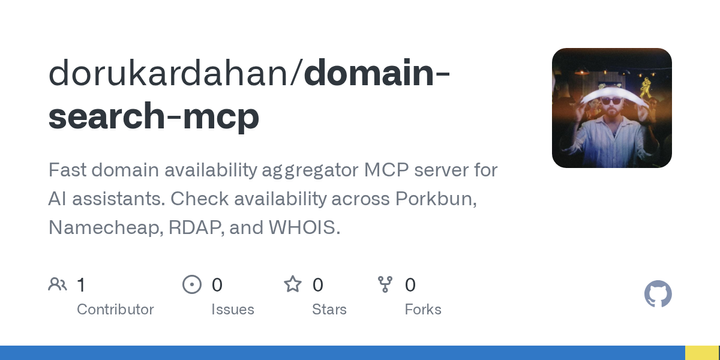
Show HN: Domain Search MCP – AI-powered domain availability checker
MCP (Model Context Protocol) server that lets AI assistants check domain availability in real-time.
Features: - Multi-source: Porkbun, Namecheap, RDAP, WHOIS - Price comparison across registrars - Social handle checking (GitHub, Twitter, npm, etc.) - Premium domain detection with pricing insights
Works with any MCP-compatible client.
Install: npx -y domain-search-mcp
Show HN: The Epstein Library
Inspired by the terrible search on the DOJ website, I created this project I've been working on over the last few days to modernize it. Slightly different than sites like JMail (which I highly recommend others play with too, super cool), I primarily focusing on both visual search, text semantic search, and full text search of all documents. Wanted to share the progress so far.
Any and all constructive feedback would be appreciated!
Work in progress: - More mobile friendly search - Better loading states - Better ranking on lean text and lean visual searches - Better thresholding of search results - Gallery view improvements including original document view with a thumbnail timeline. - Anyone can flag a document today, I'm working on taking those flags into the search results to better filter out redacted pages, blank pages, and junk pages while boosting consistently flagged newsworthy. - Open sourcing the processed dataset in a single download / torrent
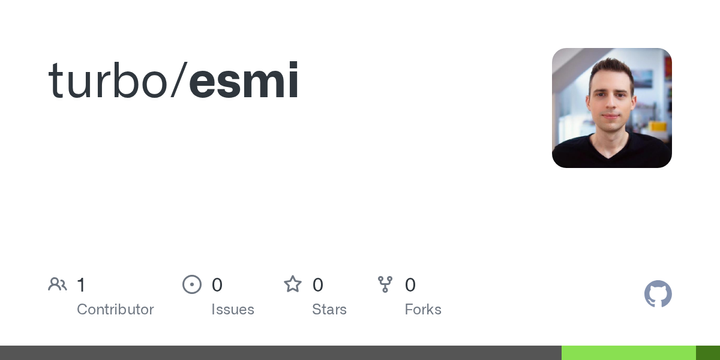
Show HN: Access low level AMD EPYC and Threadripper metrics in Grafana
The article discusses the ESMI (Embedded System Management Interface) open-source project, which provides a standardized interface for managing embedded systems. ESMI aims to simplify the development and integration of embedded devices by offering a common management framework.

Show HN: Minimalist editor that lives in browser, stores everything in the URL
I wanted to see how far I could go building a notes app using only what modern browsers already provide – no frameworks, no storage APIs, no build step.
What it does:
Single HTML file, no deps, 111 loc
Notes live in the URL hash (shareable links!)
Auto-compressed with CompressionStream
Plain-text editor (contenteditable)
History support
Page title from first # heading
Respects light/dark mode
No storage, cookies, or tracking
The entire app is the page source.
https://textarea.my/
Show HN: Exploring Mathematics with Python
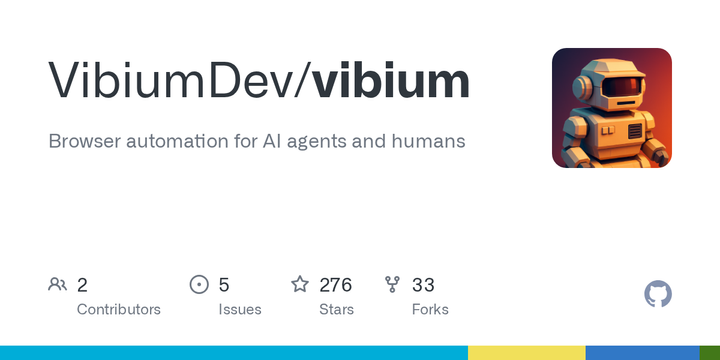
Show HN: Vibium – Browser automation for AI and humans, by Selenium's creator
i started the selenium project 21 years ago. vibium is what i'd build if i started over today with ai agents in mind. go binary under the hood (handles browser, bidi, mcp) but devs never see it. just npm install vibium. python/java coming. for claude code: claude mcp add vibium -- npx -y vibium v1 ships today. ama.

Show HN: I embedded 10M StreetView images
Show HN: I built a tool to help small teams automate basic analytical tasks
Arka (arka.so) is a AI analytics tool that lets you get insights + charts from any (structured or unstructured) data source. I built it because I was getting tired of writing SQL queries and creating Metabase charts at my last job.
I would love some feedback on our product:
How is the landing page / website
What use cases could this unlock for you?
We have some awesome tech behind the scenes and have some initial customers, but I am really keen on expanding towards a PLG motion where folks can sign up and get insights about their data fast.
Would love brutally honest feedback!

Show HN: CineCLI – Browse and torrent movies directly from your terminal
Hi HN
I built CineCLI — a cross-platform terminal app to browse movies, view details, and open torrents directly in your system torrent client.
Features: - Search movies from the terminal - Rich UI with ratings, runtime, genres - Interactive & non-interactive modes - Magnet handling via system default client - Linux/macOS/Windows support - No ads, no tracking
GitHub: https://github.com/eyeblech/cinecli PyPI: https://pypi.org/project/cinecli/
Would love feedback from terminal + Python folks
Show HN: Turn your GitHub profile into a clean, shareable visual card

Show HN: Why many AI-generated websites don't show up on Google
We’ve been experimenting quite a bit with AI website builders and kept seeing the same pattern:
Sites often look finished to users — modern UI, fast loads, everything appears “done” — but when search engines crawl them, much of the main content isn’t actually present yet.
In many cases the issue isn’t SEO basics, keywords, or content quality. It’s simply when the HTML is generated and what Google receives on first visit.
We wrote up a calm, non-marketing explanation of what’s going on, how to spot it yourself (even if you’re not very technical), and why this keeps happening with many modern AI builders.
We’re also building a tool (Pagesmith) around this problem, but the article stands on its own and should be useful even if you never use our product.
Happy to answer questions or be challenged on any of the claims.

Show HN: Jmail – Google Suite for Epstein files
Hi everyone! My name's Luke and I made the original Jmail here alongside Riley Walz. We had a ton of friends collaborate on building out more of the app suite last night in lieue of DOJ's "Epstein files" release.
Please AMA!

Show HN: Turn raw HTML into production-ready images for free
HTML2PNG.dev is a free online tool that allows users to convert HTML pages into high-quality PNG images, enabling easy sharing and integration of web content on various platforms.